As the one-year anniversary of Osama bin Laden's
death approaches, CNN has updated this list, originally published in
September 2011, taking a look at some of the dead, captured and the
remaining most wanted terrorists from the last 10 years.
While progress has been made, there are still terrorists being saught
by the U.S. government. CNN spoke with a number of intelligence
agencies to come up with this list of "dirty dozens." Here are the 12
most significant terrorists who are now dead, have been captured and
those who are still being hunted. The lists are obviously
subjective–there are many more candidates–but these are some of the top
combatants in the war on terror.
DEAD
1. Osama Bin Laden:
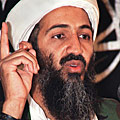
Founder
and leader of al Qaeda, responsible for the 9/11 attacks against the US
as well as numerous other mass casualty attacks. He was killed by US
Navy Seals during a raid on his compound in Abbottabad,Pakistan in May
2011
2. Muhammad Atef
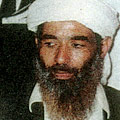
Founding
member and military chief of al Qaeda. He was killed by a US airstrike
during early fighting in Afghanistan in November 2001
3. Abu Musab al-Zarqawi
A militant jihadist who opposed US presence in the Middle East and
had a profound hatred for Israel. He formed his own terrorist group,
Tawhid wal-Jihad. In 2004, he pledged alliance to al Qaeda and changed
the name of his group to al Qaeda in Iraq. He was responsible for
hundreds of attacks in Iraq. US bombs killed Zarqawi in Iraq in June
2006.
4. Abu Layth al-Libi
Senior al Qaeda military commander who planned attacks against US and
coalition forces in Afghanistan including a 2007 bombing of the Bagram
Air Base during a visit by then Vice President Richard Cheney. He was
killed in a drone attack in Pakistan in March 2008
5. Atiyah Abd al-Rahman

Until
his recent death, he was the number 2 to al Qaeda leader Ayman
al-Zawahiri and was a key facilitator with al Qaeda affiliates.
Materials seized in the Bin Laden compound showed Rahman was in frequent
contact with Bin Laden. He was killed by a drone strike in Pakistan in
August 2011
6. Abu Hamza Rabia
Third ranking member of al Qaeda who replaced Muhammad Atef after his
death. He served as an operational planner for attacks against the US
and was killed by a drone strike in Pakistan in November 2005
7. Abu Ayyub al Masri
Replaced Abu Musab al-Zarqawi as leader of al Qaeda in Iraq (AQI) and
the insurgency in Iraq. He was killed in a joint US/Iraq operation in
April 2010
8. Sayeed al-Masri (also known as Abu Shaykh Mustafa Abu al-Yazid)
Number 3 in al Qaeda hierarchy, commander of operations in
Afghanistan and Pakistan, and chief financial officer. He was killed
in drone strike in Pakistan in May 2010
9. Mohammad Hasan Khalil al-Hakim
Senior operational manager, deputy chief of external operations, head
of propaganda for al Qaeda. He was killed by a drone strike in Pakistan
in October 2008
10. Abu Khabab al-Masri (also known as Midhat Mursi)
Al Qaeda's chief bomb maker and chemical weapons expert. He was killed in a drone attack in Pakistan in July 2008
11. Abu Obeidah al Masri
Senior al Qaeda operative who was implicated in the 2006
Trans-Atlantic plot to bomb commercial airliners after take off from
London. He died of natural causes in December 2007
12. Anwar al-Awlaki
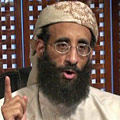
Yemeni
American, Muslim cleric who advocated violent jihad against the United
States. He was connected to two of the 9/11 hijackers as well as the
accused Ft. Hood shooter Maj. Nidal Milik Hasan and suspected underwear
bomber Umar Farouk AbdulMutallab. He was considered an operational
leader of al Qaeda in the Arabian Peninsula (AQAP) in Yemen. A CIA drone
strike killed Awlaki in September 2011.
CAPTURED
1. Khalid Sheikh Mohammed (KSM)
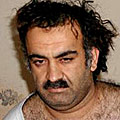
Third
ranking member of al Qaeda, operational planner and mastermind of the
9/11 attacks. He was captured in Pakistan in March 2003, and is held at
Guantanamo Bay (GITMO), Cuba
2. Abu Faraj al-Libi
Replaced KSM after his capture, directed operations against US and
coalition forces in Afghanistan, planned 2003 assassination attempt
against then Pakistani President Pervez Musharref. He was captured in
May 2005 and is held at GITMO
3. Ramzi Bin al-Shibh
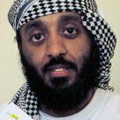
Involved
in planning of 9/11 attacks, associated with some of the 9/11
hijackers, believed to have been targeted to be the 20th hijacker but
was unable to get into the US. He was captured in September 2002 and is
held at GITMO
4. Abu Zubaydah
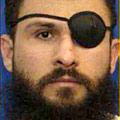
Initially
believed to be a high ranking al Qaeda leader, but the US later
concluded he held a much lesser position. He was captured in Pakistan in
March 2002 and is held at GITMO.
5. Umar Patek

Connected
to the 2002 Bali nightclub bombing which killed more than 200 people
including 7 Americans. He was captured by Pakistani forces in January
2011 and sent to Indonesia
6. Younis al-Mauretani
A key planner for al Qaeda who is believed to have had direct contact
with Osama Bin Laden and was involved in planning attacks in Europe.
He was captured by Pakistani forces in September 2011 and is held by the
Pakistanis.
7. Hambali (also Riduan Isamuddin)
Operations Chief for the terrorist group Jemaah Islamiya (JI), often
described as Bin Laden's leader in Southeast Asia, believed to be
connected to a number of deadly bombing attacks in Indonsia. He was
captured in a joint US/Thai operation in Thailand in August 2003 and is
held at GITMO
8. al Rahim al Nashiri
Head of al Qaeda operations in the Persian Gulf, believed to be the
mastermind of the bombing of the USS Cole in 2000 which killed 17 US
sailors. He was captured in November 2002 and is held at GITMO
9. Ali al Aziz Ali
Khalid Sheikh Mohammed's nephew and chief deputy who helped train
some of the 9/11 hijackers. He was captured in April 2003 and is held at
GITMO
10. Walid bin Attash
Former Bin Laden body guard, assisted 9/11 hijackers, helped with
preparations for the 1998 bombings of the US Embassies in East Africa
and the 2000 attack on the USS Cole. He was captured in April 2003 and
is held at GITMO
11. Mustafa Ahman al Hawsawi
Worked with Khalid Sheikh Mohammed on numerous al Qaeda plots
including providing assistance to 9/11 hijackers. He was captured with
KSM in March 2003 in Pakistan and is held in GITMO
12. Abdul Ghani Baradar
A founder of Afghan Taliban, deputy to leader Mullah Omar, directed
the insurgency against US and coalition forces from Pakistan. He was
captured by Pakistani and American intelligence forces in February 2010
and is held by the Pakistanis
MOST WANTED:
1. Ayman al-Zawahiri
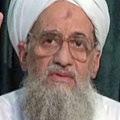
A
physician, long time deputy to Osama Bin Laden who recently was named
leader of al Qaeda following Bin Laden's death. He has been seen and
heard in numerous al Qaeda videos and audio tapes on the web. He is on
the FBI Most Wanted Terrorists list, was indicted in the U.S. for his
role in the 1998 bombings of the US Embassies in Kenya and Tanzania
2. Saif al-Adel

A
member of the senior leadership of al Qaeda who is believed to be in
Iran. He is on the FBI Most Wanted Terrorists list and was indicted by
the U.S. in connection with the 1998 bombings of the US Embassies in
Kenya and Tanzania
3. Anas al-Liby
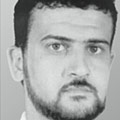
A
computer expert for al Qaeda who is on the FBI Most Wanted Terrorists
list, and has been indicted for his role in the 1998 bombings of the US
Embassies in Kenya and Tanzania.
4. Ibrahim al-Asiri
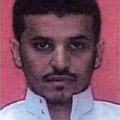 Suspected
of being the chief bombmaker for AQAP, Asiri is believed to be
responsible for designing the explosive devices used in the unsuccessful
Christmas Day 2009 plot to blow up a US airliner as it landed in
Detroit and in the cargo plane bomb plot in 2010.
Suspected
of being the chief bombmaker for AQAP, Asiri is believed to be
responsible for designing the explosive devices used in the unsuccessful
Christmas Day 2009 plot to blow up a US airliner as it landed in
Detroit and in the cargo plane bomb plot in 2010.
5. Adnan el Shukrijumah
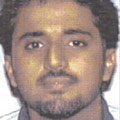 A
senior leader of al Qaeda's external operations program who is on the
FBI Most Wanted Terrorists list and has been indicted by the U.S. in the
2009 plot to attack the New York City subway system as well as targets
in the United Kingdom.
A
senior leader of al Qaeda's external operations program who is on the
FBI Most Wanted Terrorists list and has been indicted by the U.S. in the
2009 plot to attack the New York City subway system as well as targets
in the United Kingdom.
6. Hakimullah Mehsud
A leader of the Pakistan Taliban with close ties to al Qaeda and the
Afghan Taliban. He claimed responsibility for the 2009 bombing a the
Khost Forward Operating Base which killed 7 CIA employees. He is on the
FBI Most Wanted Terrorists list.
7. Abu Yahy al-Libi
 Islamic scholar, high ranking member of al Qaeda, seen as the public face of al Qaeda, appearing frequently in internet videos
Islamic scholar, high ranking member of al Qaeda, seen as the public face of al Qaeda, appearing frequently in internet videos
8. Adam Gadahn
 American
propagandist for al Qaeda who is frequently seen on al Qaeda website
videos. He is on the FBI Most Wanted Terrorists List and has been
indicted for treason and material support for al Qaeda.
American
propagandist for al Qaeda who is frequently seen on al Qaeda website
videos. He is on the FBI Most Wanted Terrorists List and has been
indicted for treason and material support for al Qaeda.
9. Mullah Mohammad Omar
 Leader
of the Afghanistan Taliban who allowed Osama Bin Laden and al Qaeda
safe haven in Afghanistan when the Taliban controlled the country prior
to the 9/11 terrorist attack on the U.S.
Leader
of the Afghanistan Taliban who allowed Osama Bin Laden and al Qaeda
safe haven in Afghanistan when the Taliban controlled the country prior
to the 9/11 terrorist attack on the U.S.
10. Nasser Al Wahishi
Leader of al Qaeda in the Arabian Peninsula (AQAP), former private
secretary to Osama Bin Laden. He has vowed to avenge Bin Laden's death.
11. Sirajuddin Haqqani
 Senior
leader of the Haqqani network in Afghanistan which maintains close ties
to al Qaeda and who is believed to have planned an assassination
attempt against Afghani President Hamid Karzai
Senior
leader of the Haqqani network in Afghanistan which maintains close ties
to al Qaeda and who is believed to have planned an assassination
attempt against Afghani President Hamid Karzai
12. Wali Ur Rehman
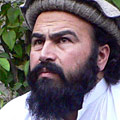 Senior member of Pakistani Taliban who has participated in cross border attacks against US and coalition forces in Afghanistan
Senior member of Pakistani Taliban who has participated in cross border attacks against US and coalition forces in Afghanistan



 Founder
and leader of al Qaeda, responsible for the 9/11 attacks against the US
as well as numerous other mass casualty attacks. He was killed by US
Navy Seals during a raid on his compound in Abbottabad,Pakistan in May
2011
Founder
and leader of al Qaeda, responsible for the 9/11 attacks against the US
as well as numerous other mass casualty attacks. He was killed by US
Navy Seals during a raid on his compound in Abbottabad,Pakistan in May
2011 Founding
member and military chief of al Qaeda. He was killed by a US airstrike
during early fighting in Afghanistan in November 2001
Founding
member and military chief of al Qaeda. He was killed by a US airstrike
during early fighting in Afghanistan in November 2001 Until
his recent death, he was the number 2 to al Qaeda leader Ayman
al-Zawahiri and was a key facilitator with al Qaeda affiliates.
Materials seized in the Bin Laden compound showed Rahman was in frequent
contact with Bin Laden. He was killed by a drone strike in Pakistan in
August 2011
Until
his recent death, he was the number 2 to al Qaeda leader Ayman
al-Zawahiri and was a key facilitator with al Qaeda affiliates.
Materials seized in the Bin Laden compound showed Rahman was in frequent
contact with Bin Laden. He was killed by a drone strike in Pakistan in
August 2011 Yemeni
American, Muslim cleric who advocated violent jihad against the United
States. He was connected to two of the 9/11 hijackers as well as the
accused Ft. Hood shooter Maj. Nidal Milik Hasan and suspected underwear
bomber Umar Farouk AbdulMutallab. He was considered an operational
leader of al Qaeda in the Arabian Peninsula (AQAP) in Yemen. A CIA drone
strike killed Awlaki in September 2011.
Yemeni
American, Muslim cleric who advocated violent jihad against the United
States. He was connected to two of the 9/11 hijackers as well as the
accused Ft. Hood shooter Maj. Nidal Milik Hasan and suspected underwear
bomber Umar Farouk AbdulMutallab. He was considered an operational
leader of al Qaeda in the Arabian Peninsula (AQAP) in Yemen. A CIA drone
strike killed Awlaki in September 2011. Third
ranking member of al Qaeda, operational planner and mastermind of the
9/11 attacks. He was captured in Pakistan in March 2003, and is held at
Guantanamo Bay (GITMO), Cuba
Third
ranking member of al Qaeda, operational planner and mastermind of the
9/11 attacks. He was captured in Pakistan in March 2003, and is held at
Guantanamo Bay (GITMO), Cuba Involved
in planning of 9/11 attacks, associated with some of the 9/11
hijackers, believed to have been targeted to be the 20th hijacker but
was unable to get into the US. He was captured in September 2002 and is
held at GITMO
Involved
in planning of 9/11 attacks, associated with some of the 9/11
hijackers, believed to have been targeted to be the 20th hijacker but
was unable to get into the US. He was captured in September 2002 and is
held at GITMO Initially
believed to be a high ranking al Qaeda leader, but the US later
concluded he held a much lesser position. He was captured in Pakistan in
March 2002 and is held at GITMO.
Initially
believed to be a high ranking al Qaeda leader, but the US later
concluded he held a much lesser position. He was captured in Pakistan in
March 2002 and is held at GITMO. Connected
to the 2002 Bali nightclub bombing which killed more than 200 people
including 7 Americans. He was captured by Pakistani forces in January
2011 and sent to Indonesia
Connected
to the 2002 Bali nightclub bombing which killed more than 200 people
including 7 Americans. He was captured by Pakistani forces in January
2011 and sent to Indonesia A
physician, long time deputy to Osama Bin Laden who recently was named
leader of al Qaeda following Bin Laden's death. He has been seen and
heard in numerous al Qaeda videos and audio tapes on the web. He is on
the FBI Most Wanted Terrorists list, was indicted in the U.S. for his
role in the 1998 bombings of the US Embassies in Kenya and Tanzania
A
physician, long time deputy to Osama Bin Laden who recently was named
leader of al Qaeda following Bin Laden's death. He has been seen and
heard in numerous al Qaeda videos and audio tapes on the web. He is on
the FBI Most Wanted Terrorists list, was indicted in the U.S. for his
role in the 1998 bombings of the US Embassies in Kenya and Tanzania A
member of the senior leadership of al Qaeda who is believed to be in
Iran. He is on the FBI Most Wanted Terrorists list and was indicted by
the U.S. in connection with the 1998 bombings of the US Embassies in
Kenya and Tanzania
A
member of the senior leadership of al Qaeda who is believed to be in
Iran. He is on the FBI Most Wanted Terrorists list and was indicted by
the U.S. in connection with the 1998 bombings of the US Embassies in
Kenya and Tanzania A
computer expert for al Qaeda who is on the FBI Most Wanted Terrorists
list, and has been indicted for his role in the 1998 bombings of the US
Embassies in Kenya and Tanzania.
A
computer expert for al Qaeda who is on the FBI Most Wanted Terrorists
list, and has been indicted for his role in the 1998 bombings of the US
Embassies in Kenya and Tanzania. Suspected
of being the chief bombmaker for AQAP, Asiri is believed to be
responsible for designing the explosive devices used in the unsuccessful
Christmas Day 2009 plot to blow up a US airliner as it landed in
Detroit and in the cargo plane bomb plot in 2010.
Suspected
of being the chief bombmaker for AQAP, Asiri is believed to be
responsible for designing the explosive devices used in the unsuccessful
Christmas Day 2009 plot to blow up a US airliner as it landed in
Detroit and in the cargo plane bomb plot in 2010. A
senior leader of al Qaeda's external operations program who is on the
FBI Most Wanted Terrorists list and has been indicted by the U.S. in the
2009 plot to attack the New York City subway system as well as targets
in the United Kingdom.
A
senior leader of al Qaeda's external operations program who is on the
FBI Most Wanted Terrorists list and has been indicted by the U.S. in the
2009 plot to attack the New York City subway system as well as targets
in the United Kingdom. Islamic scholar, high ranking member of al Qaeda, seen as the public face of al Qaeda, appearing frequently in internet videos
Islamic scholar, high ranking member of al Qaeda, seen as the public face of al Qaeda, appearing frequently in internet videos American
propagandist for al Qaeda who is frequently seen on al Qaeda website
videos. He is on the FBI Most Wanted Terrorists List and has been
indicted for treason and material support for al Qaeda.
American
propagandist for al Qaeda who is frequently seen on al Qaeda website
videos. He is on the FBI Most Wanted Terrorists List and has been
indicted for treason and material support for al Qaeda. Leader
of the Afghanistan Taliban who allowed Osama Bin Laden and al Qaeda
safe haven in Afghanistan when the Taliban controlled the country prior
to the 9/11 terrorist attack on the U.S.
Leader
of the Afghanistan Taliban who allowed Osama Bin Laden and al Qaeda
safe haven in Afghanistan when the Taliban controlled the country prior
to the 9/11 terrorist attack on the U.S. Senior
leader of the Haqqani network in Afghanistan which maintains close ties
to al Qaeda and who is believed to have planned an assassination
attempt against Afghani President Hamid Karzai
Senior
leader of the Haqqani network in Afghanistan which maintains close ties
to al Qaeda and who is believed to have planned an assassination
attempt against Afghani President Hamid Karzai Senior member of Pakistani Taliban who has participated in cross border attacks against US and coalition forces in Afghanistan
Senior member of Pakistani Taliban who has participated in cross border attacks against US and coalition forces in Afghanistan
